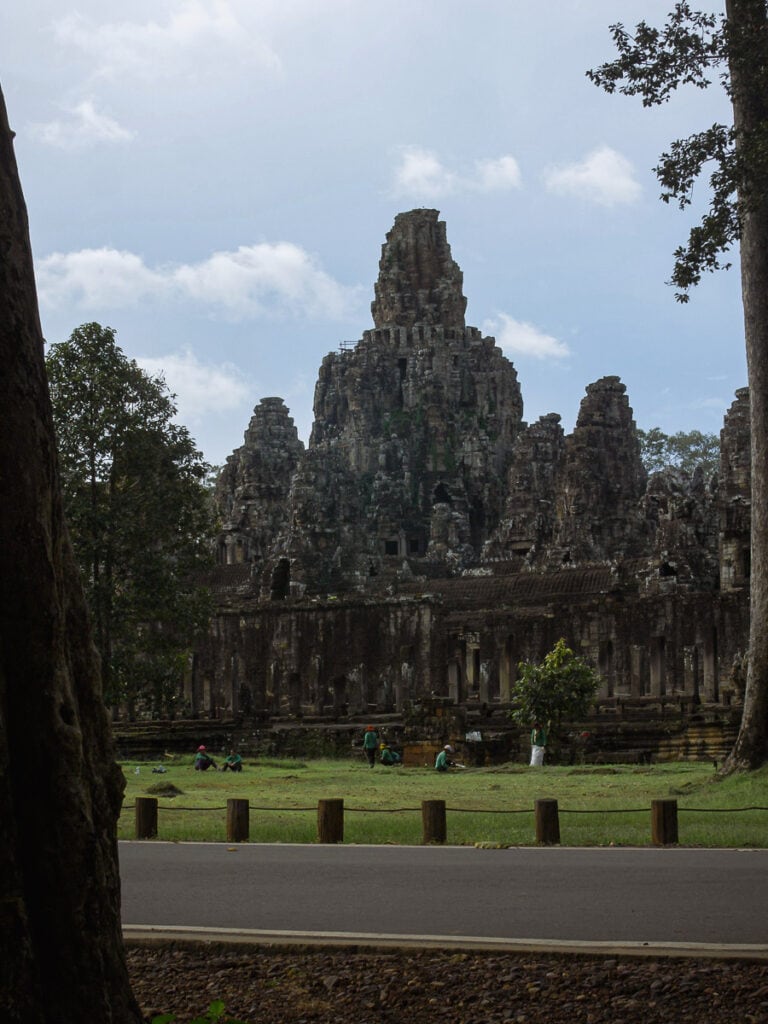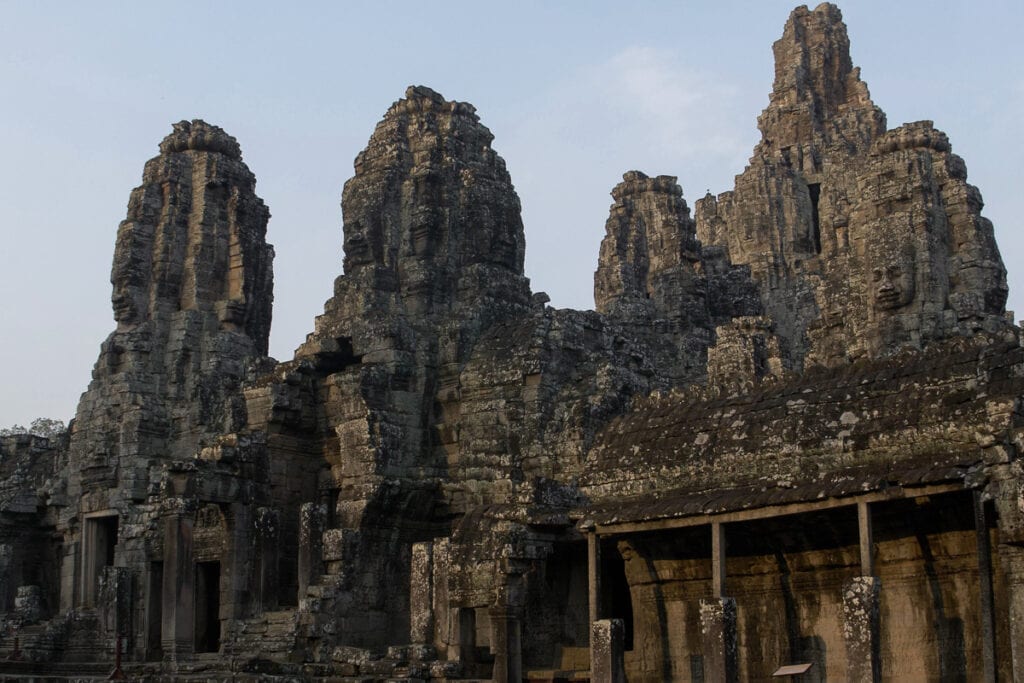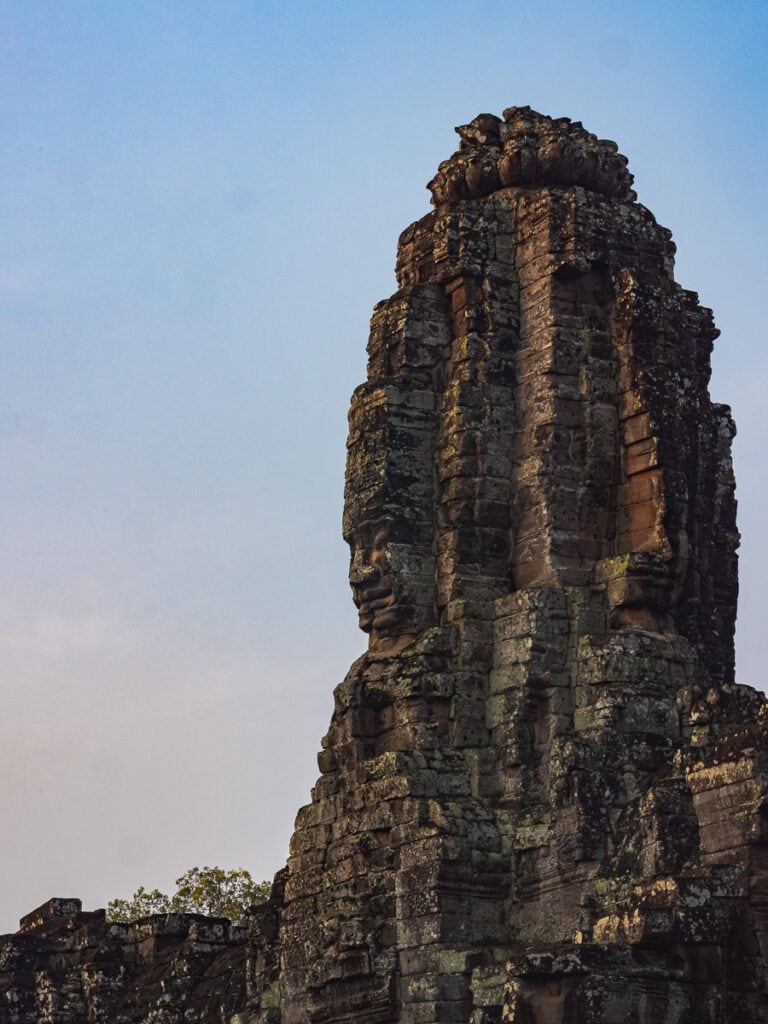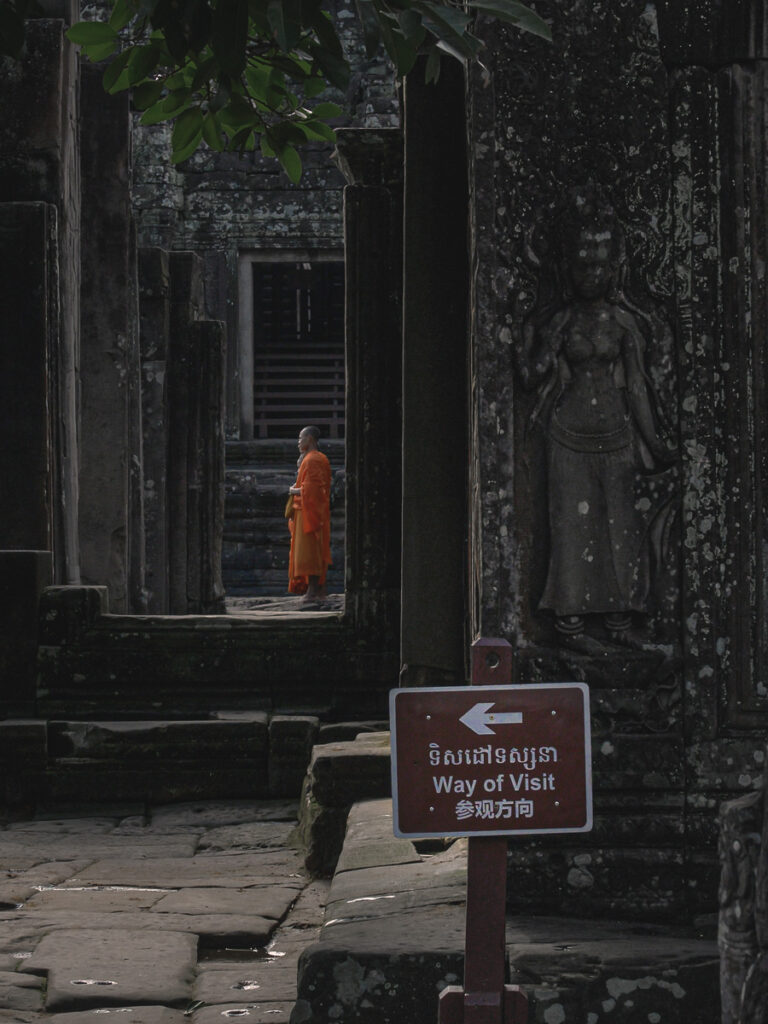
March, 2022
Bayon | Angkor | Cambodia
Bayon is one of the last temples that were built in Angkor. It was constructed in late 12th century by King Jayavarman VII, one of the most powerful, distinctive and productive kings of the Khmer Empire.
Jayavarman VII was proclaimed king in 1181 after driving out the Cham Empire from the region, who had invaded and controlled Angkor since 1177. After reconstituting the Khmer Empire and reclaiming its territory, King Jayavarman VII began his exceptional reign of more than 30 years. During which, he engaged in an extensive building program investing in many infrastructure projects such as new temples, roads, bridges, reservoirs, hospital and canals. During his lifetime he brought the Khmer empire to its zenith, both in terms of territorial expansion and of royal architecture and construction.
Quickly after arriving in power, the new king began the process of building a new capital city: Angkor Thom, which would be the last and most steady capital of the Khmer Empire. And at the exact center Angkor Thom, he decided to build the new state temple: Bayon.
Jayavarman VII was the first king the make Buddhism a state religion. Therefore, Bayon was initially built as a Buddhist temple.
One of its most distinctive features of Bayon are the tranquil and smiley stones faces placed on many of its towers which are projected outside the upper terrace and clustered around its central peak. Each tower has 4 faces, each one facing one of the four cardinal directions of the compass. All faces are about 4 meters high and they all have the same serene smile, with both eyes closed. People believe the expression represents the all-knowing state of inner peace, and perhaps even a state of Nirvana.
Some historians argue that the faces are meant to represent Lokesvara, the Bodhisattva of compassion. However, others believe that the faces are portraits of King Jayavarman VII, mainly due to similarities between the faces and other statues of the king that are spread in other sites of Angkor. At the end, both hypotheses may have elements of truth since Khmer rulers regarded themselves as “god-kings” and should be portraited as one.
The number of towers also provokes debate among historians. One theory defends that there was one tower for each of the 54 provinces of the Khmer Empire at the time of the Bayon’s construction. Therefore, each tower would symbolically be watching over all the inhabitants of the kingdom. However, over time, many towers had fallen and today, there are only 37 towers still standing.
Another interesting and remarkable aspect of Bayon Temple are the well-preserved bas-relief carvings that we can find on its inner walls. These carvings depict an unusual combination of scenes from history, mythology, and even everyday life. One of the most famous carvings that we can find is the Khmer-Cham battle that was fought just before the construction of the temple.
Nevertheless, a few decades after the death of King Jayavarman VII, the temple was eventually turned into a Hindu temple when King Jayavarman VIII reverted the official Khmer religion back to Hinduism. After that, images of the Buddha in Bayon were either destroyed or turned into Hindu images. The temple continued to experience further modifications under the Theravada Buddhist kings in the following decades. Today, Bayon is one of the most visited temples in Angkor, together with Angkor Wat and Ta Prohm.












